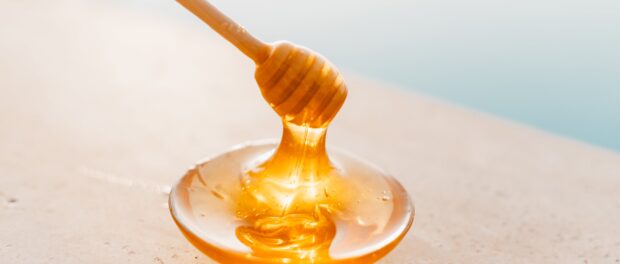3 Ways To Tell If Your Honey Is Fake

The prevalence of fake honey is a significant issue worldwide. Shockingly, tests have shown that 50% to 70% of all honey in the United States is either fake or adulterated. To address this problem, True Source Honey, a honey certification group, was established. However, a class action complaint alleges that True Source Honey is being misused by businesses it certifies to manipulate the market and sell counterfeit honey at lower prices, diverting sales and profits for their own benefit.
Fake and adulterated honey can be produced through various deceptive methods. Some common strategies include diluting honey with sugars or syrups, or substituting corn syrup for the natural pollen collection process. Additionally, low-quality honey may undergo filtration and be blended with high-grade pollen from different sources to conceal its true origin. Misleadingly labeled “local” honey often turns out to be inexpensive honey sourced from overseas.
To ensure the authenticity of honey, it is recommended to purchase from local beekeepers, who are frequently found at farmers markets. It is also helpful to rely on your senses when evaluating honey. Here are some indicators to look for:
- Floral notes: Adulterated honey often lacks the distinctive floral notes present in pure honey. When tasting the honey, pay attention to the aroma and flavor. Pure honey will have a fragrant floral scent and a distinct taste that varies based on the type of flowers the bees have foraged from.
- Taste: Adulterated honey may leave a lingering aftertaste or taste excessively sweet. Real honey has a balanced sweetness without overpowering flavors.
- Texture: Genuine honey has a less sticky and more opaque texture compared to adulterated honey, which is often stickier and more transparent. When observing the honey, pure honey may appear slightly cloudy or have small particles of honeycomb or pollen suspended in it.
It’s important to note that these indicators are helpful but not foolproof, as some counterfeit honey may mimic the appearance and taste of real honey. Therefore, purchasing from trusted sources and local beekeepers who have a reputation for producing authentic honey is the best way to ensure you are getting genuine honey.
Food fraud, including the adulteration of honey, is a pervasive problem. In his book “Real Food/Fake Food: Why You Don’t Know What You’re Eating and What You Can Do About It,” award-winning journalist and best-selling author Larry Olmsted exposes numerous instances of food fraud. For instance, testing has revealed that a significant portion of commercially available olive oils, ranging from 60% to 90%, are adulterated with cheaper seed oils rich in linoleic acid, which can be detrimental to health.
Therefore, it is crucial to be aware that a substantial portion of the honey and other food products on the market may not be genuine. By understanding the issue and making informed choices, consumers can protect themselves from consuming counterfeit or adulterated food items.



